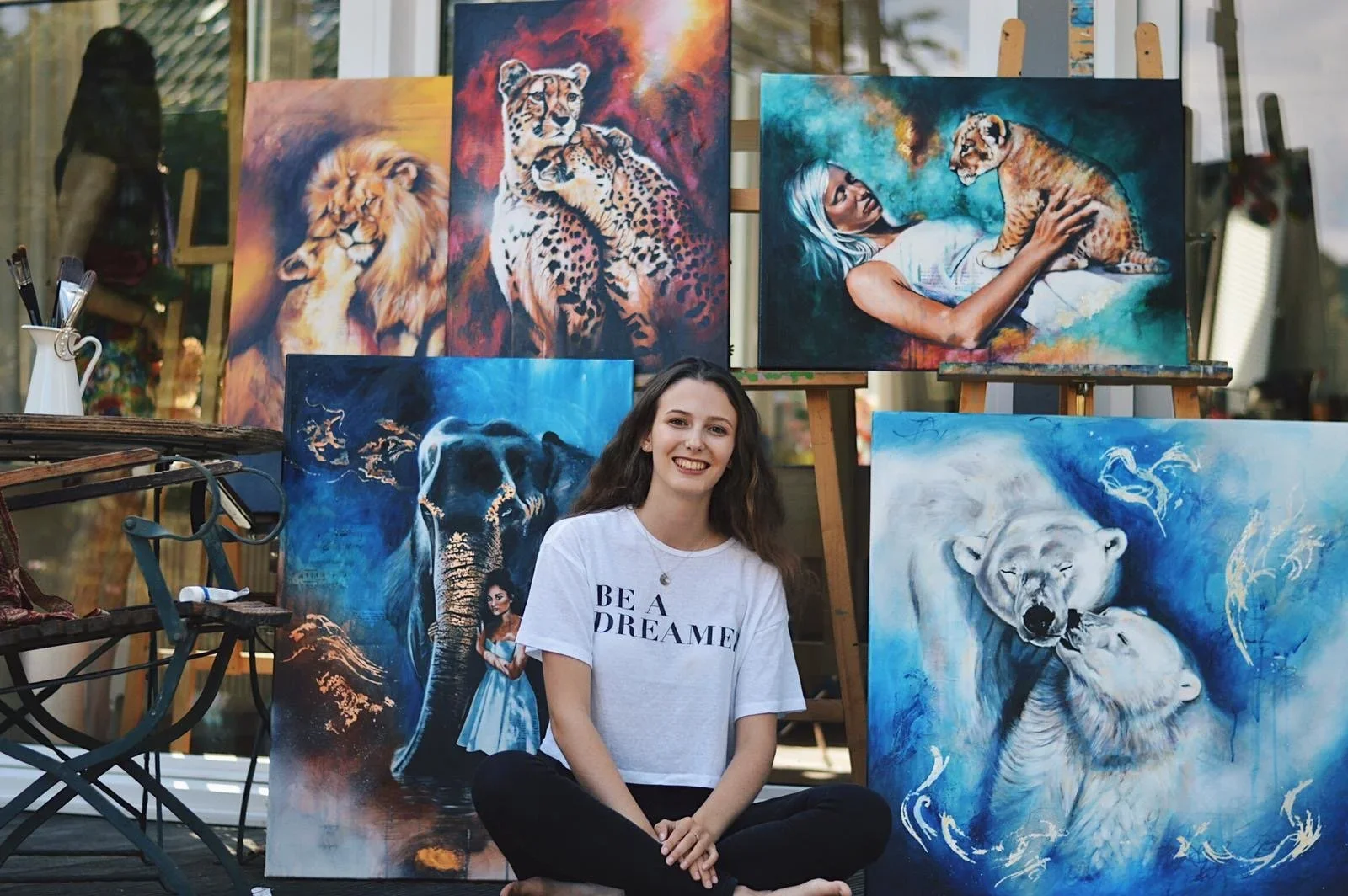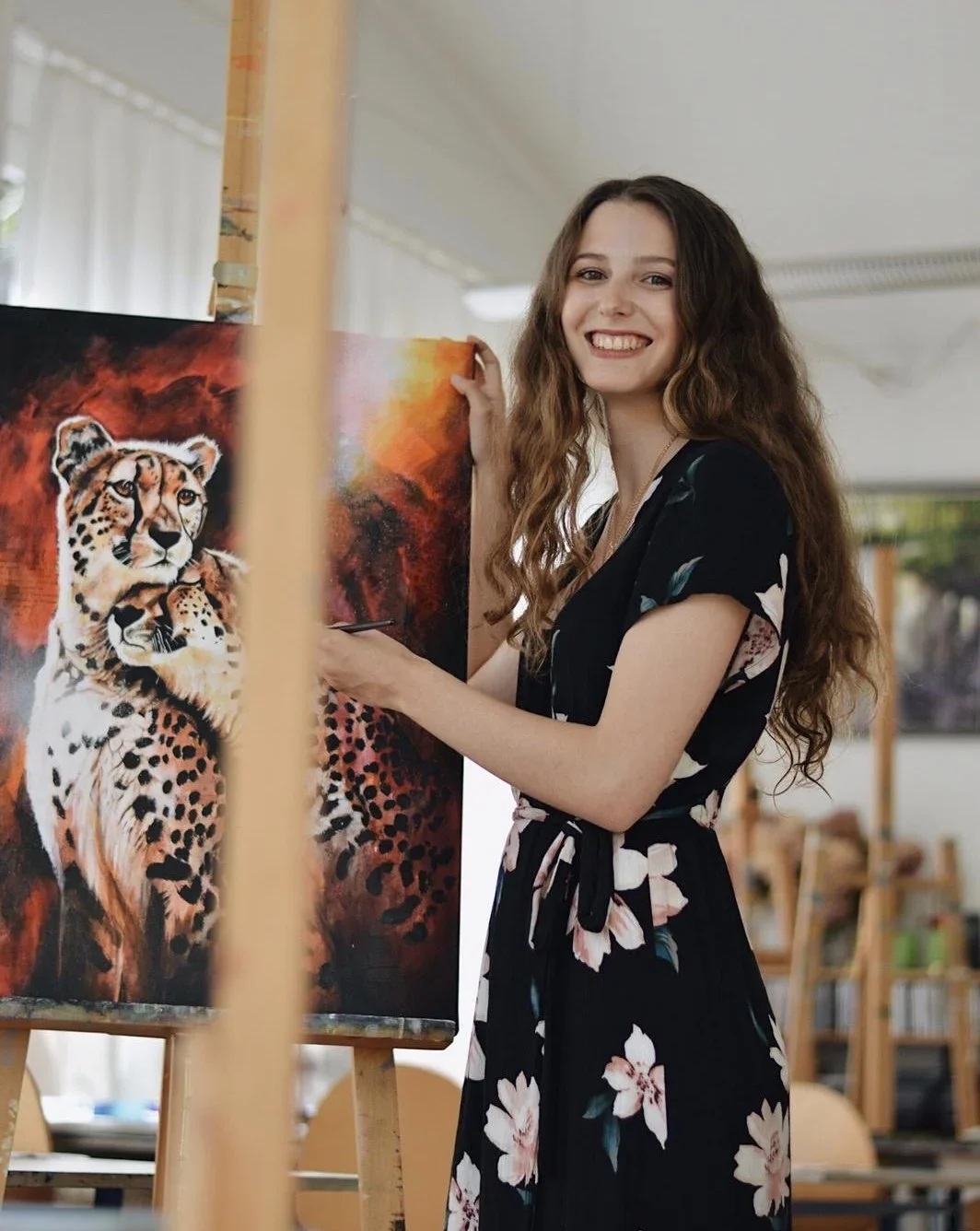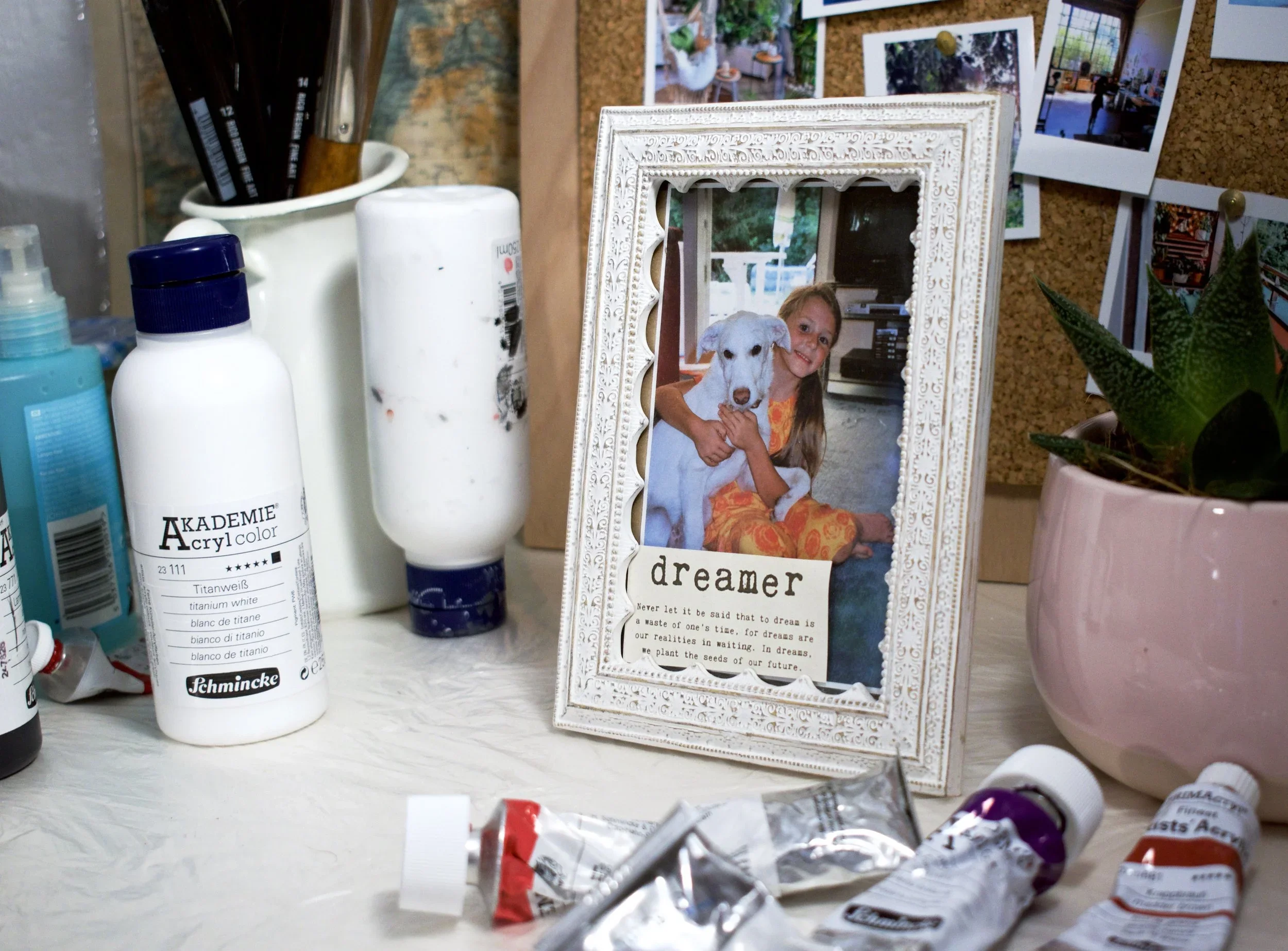Becky Hertz Interview
Becky is a wonderful artist who I came across on Instagram a short while ago. I love animals and painting animals and so does Becky, so it’s no wonder I fell in love with her beautiful artwork.
I am so happy that I was able to interview Becky and talk about her art, inspiration, experience at Milan Art Institute, the environmental effects of art and so much more! She even gave plenty of tips for aspiring artists so scroll below to give it a read!
Nadine: What's your name, where are you from and what do you do?
Becky: My name is Becky Hertz and I’m from a village close to Hamburg in the north of Germany. I am a visual artist specializing in wildlife and pet portraits. In other words, I basically pour my love for animals into paintings.
N: Did you always dream of being an artist?
B: Yes, I already wanted to become an artist as a young child. However, I quickly deemed it impossible, thinking that I wouldn’t be able to earn any money. Looking back, I find that a little shocking. It makes me wonder how deeply engrained the image of the starving artist is in our society, and at what point children start to add this to their belief system. Luckily, my parents were very supportive of my fascination for art and supplied me with everything I needed to hone my skills. By the time I graduated from high school, I had almost regained confidence in my childhood dream, but it still took a few unexpected turns of destiny to get me to study at the Milan Art Institute.
N: How did studying at the Milan Art Institute help you in your journey? Did you have any "aha" moments where everything: the world, you and your art just made sense?
B: Oh yes, I definitely had those moments! I was beyond fascinated by the Milans’ way to paint with acrylics. It revolutionized my whole way of approaching paintings. And when we were discovering our voices as artists, everything fell into place for me. It was as if I had passed my life not seeing the forest for the trees. Prior to the Mastery Program, painting animals wasn’t really a thing for me. But it is actually the most natural thing in the world, given that I had always cared deeply about animals from a young age. I can’t imagine not painting animals now.
N: What are your favorite art supplies?
B: I really love graphite powder. It allows me to loosely sketch out my whole drawing and then refine it. As a teenager, I was drawing very tight and controlled. I was a perfectionist, finishing one tiny section after the other. Using graphite powder has helped me to let go and be more expressive and so much faster.
N: Do you have a particular process that you go through when you approach your new pieces?
B: I do have a particular process, but it will evolve in the coming months. Currently, I start with a drawing and add beautiful collage papers to the background. I then build up several layers of acrylic paint. When the whole piece already looks close to being done, I occasionally add metal leaf. For the very last layers, I switch to oil paint.
Lately, it has been on my mind a lot that acrylic paint is basically plastic. Its binder, which is responsible for holding the pigment together, is a polymer. Ever since I’ve had that realization, I’ve felt caught up in a dilemma: I love acrylic paint for its unique consistency, its ability to dry so fast, and the freedom of building up layers quickly, but I also want my art to be in harmony with the environment.
That being said, I was thrilled to find out that the US-American company, Natural Earth Paint has developed an “acrylic” medium that is completely free of petroleum-derived ingredients and non-toxic. It was past midnight when I got the news, and I literally ran up to my baffled sister (the only one still awake) all jumping and beaming with joy. The “acrylic” medium can be mixed with pigments to create “acrylic” paint. It was introduced to the US market in December 2020 and I actually just found out a few minutes ago that it’s finally available in Europe, too! According to the Natural Earth Paint website, tubed “acrylic” paint will be available this spring or summer. I am just in awe of how inventive humans striving for a positive change can be!
N: Art is such a healing thing. How would you say art has helped you in a particular way?
B: I believe that art can be very comforting in times of grief. I particularly remember drawing my grandpa surrounded by flowers after he had passed away. It was the first time I was consciously experiencing the pain of the loss of a family member. I listened to “Photograph” by Ed Sheeran on repeat while drawing him, and this whole process was sort of a healing extended goodbye.
When my dog Toby passed away a year ago, I was heartbroken. I was six when we adopted him, so I can hardly remember life without him. A painting of Toby and me is hanging in our living room. To me, it is invaluable because it gives me somewhere to look and find his cute face when I miss him.
N: What would you like viewers/collectors to take away from your paintings?
B: I would love for every viewer to find themselves in one of my paintings: as a mother, father, daughter, son, friend, lover or anything else that seems fitting. I want to highlight our timeless similarities with all other animals by portraying their caring interaction with one another and with humans. I believe that empathy is one of our greatest forces, and I aspire to gently touch on the intrinsic empathy existing within everyone. The more empathy we feel, the more we care about other animals, the more drive we will hopefully have to save them from extinction.
N: What tips can you give an aspiring artist?
B: Ahh, there are so many things I’d like to say:
1. If you find yourself doubting that it is possible to make a living as an artist, look up Tahlia Stanton. I came across her art when she was relatively in the beginning of her art career, and watching her grow is endlessly inspiring to me. I think it is so important to allow yourself to fully embrace the belief that it is possible to flourish as an artist, and to have a real life example to refer to.
2. Only take advice from people who have achieved what you want to achieve. Don’t let other people’s worries weigh you down.
3. If possible, learn directly from the artists whose art you love the most. They may have a lot of specific tricks up their sleeves that will enable you to make the art you dream of making. Especially nowadays, the possibility is high that your favorite artists offer online courses or upload videos on YouTube or Patreon for you to study.
4. If your art style is all over the place, take some time to listen to yourself and find out what you care about deep down. If you could only tell one message with your art, what would it say? Then plan out a dozen paintings telling that one message and don’t vary too much in the choice of materials. Try to stick with it for a while. After that, you can adjust anything that doesn’t feel true to you anymore. It will always be an ongoing process.
5. Don’t be afraid to share your art on social media! It takes courage, I know, but the world wants and needs to see your art.
6. If you are looking for free advice on how to grow your art business, listen to my favorite podcast while you paint. It’s called “Artist Academy” by Andrea Ehrhardt.
7. Be patient and keep going. Trust the process and enjoy the journey.
Thank you so much Becky!


